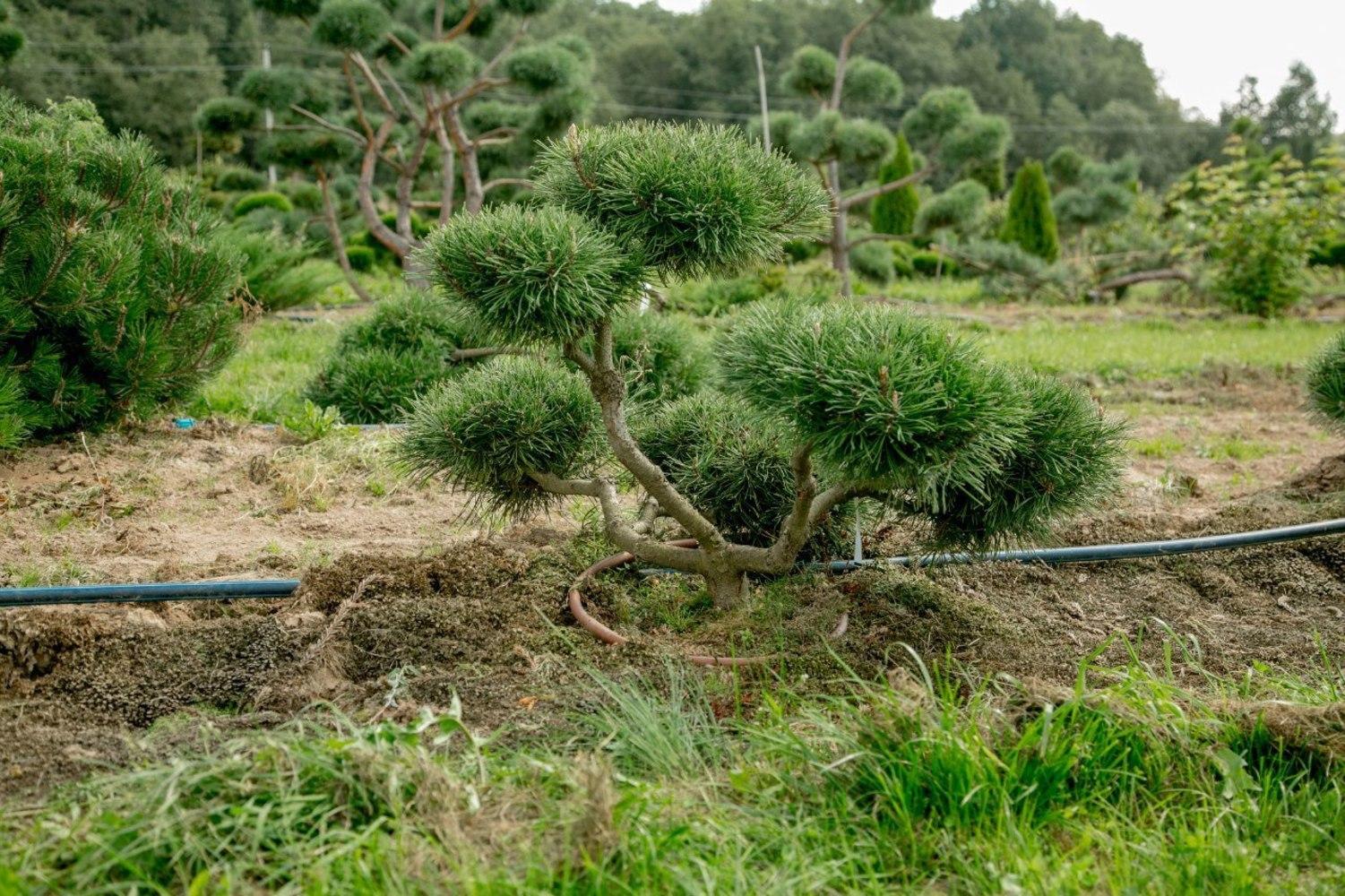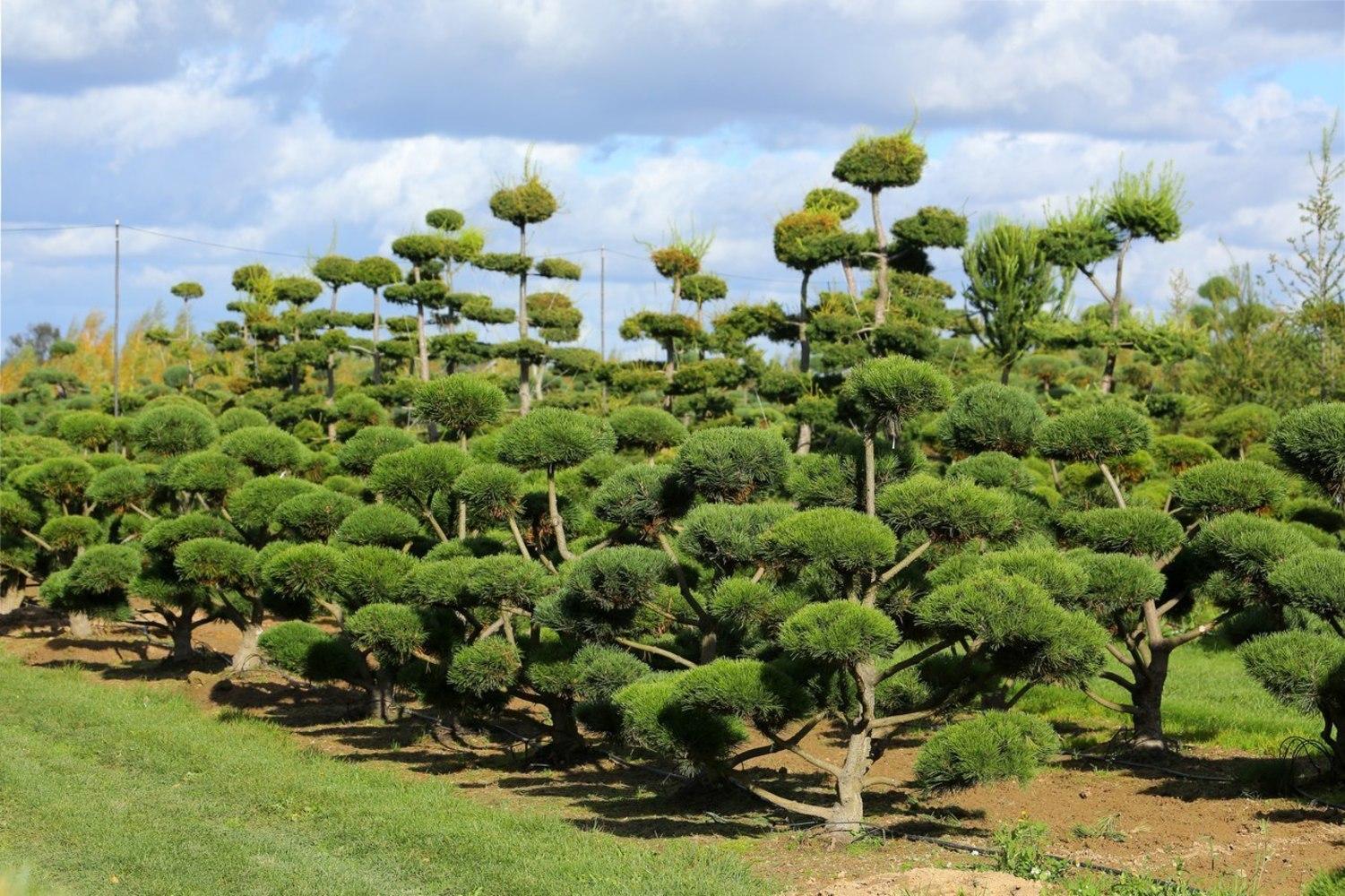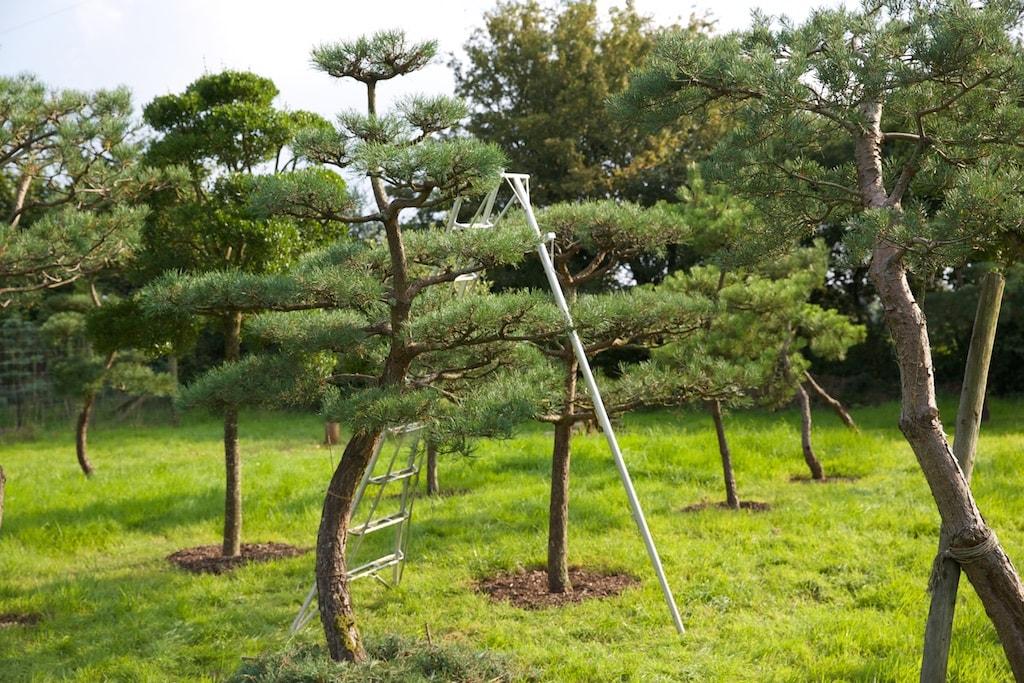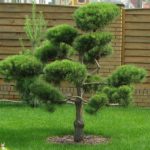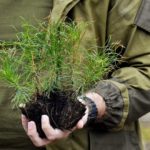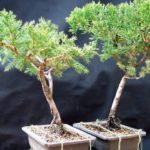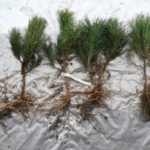Niwaki is a rather interesting design solution, which is increasingly used for arranging home gardens. This term refers to a special type of tree trimming that allows them to be given an unusual shape. Nivaki are made from pine or other coniferous trees. Thanks to this, it is possible to obtain a spectacular result. In order for the plant to tolerate pruning normally, it needs to be provided with high-quality care.
What it is
The name of this method comes from the merger of two Japanese words, namely “niva”, which translates as “garden”, and “ki”, meaning “tree”. Thus, we can conclude that the technique involves growing ornamental trees only for gardens.
At the same time, in European countries the concept of “garden bonsai” is often used, which echoes the Japanese term “niwaki”. However, it is important to consider that the European style has significant differences from the Japanese one. The difference concerns execution technique and process philosophy.
In European culture, it is customary to put people at the forefront. In this case, nature is given a subordinate importance. In Japan, the main emphasis is on harmony. In addition, in the nivaki technique there are clear restrictions on the number of branches that remain in each of the tiers. In the art of garden bonsai, nothing is strictly regulated. Therefore, masters have more space for creativity. You can create compositions from different pine trees - common, mountain and other varieties.
What pine trees should you use?
The niwaki technique is used for both deciduous and coniferous crops. However, the second category is used much more often. This is due to the fact that conifers remain green throughout the year. In this case, the most popular option is to use pine, which lends itself well to pruning. Most often, crown formation using the nivaki method is carried out in the following varieties:
- ordinary;
- black;
- mountain;
- Virginia;
- Balkan;
- Siberian cedar.
Niwaki concepts and styles
To make your own niwaki, it is important to choose the right style of wood. The following options are possible:
- Kotobuki - this direction involves the creation of hieroglyphs from wood.This style is a kind of life philosophy that helps program a person for specific life attitudes. In this way he can realize his dreams of love, happiness, and wealth. To get a complete composition, you need to install a special flashlight - Oki-gata - near the trees in the Kotobuki style. It not only serves as decoration, but also enhances the influence of the symbol.
- Tekan - used in park areas and spacious areas. In this case, the tree is not shortened. It should develop freely to its natural size. This direction implies an emphasis on individual shoots. They are forced to grow horizontally by pruning them to produce lush, ball-shaped paws at the tips of the branches.
- Moegi is a complex direction that involves creating a certain shape of the trunk. It is bent at a specific angle, while the crown is formed in a natural way.
- Kyoto style - a plant formed in this direction serves as an effective addition to the landscape. In this case, the tree needs to be cut down and a stump left. Over time, young shoots will begin to grow chaotically from it. As a result, lush balls form on broken shoots and stumps.
- Kongai - this direction is used for areas with a complex design. It is used on slopes, in rocky soil, and on cliffs. In this case, the branches are placed as low as possible to the surface of the earth, giving them a drooping shape. In this case, the rhizome should seem to crawl out of the ground, rising and intertwining with the shoots.
- Shakan is considered the simplest version of nivaki. Its essence lies in a slight tilt of the trunks at a uniform angle. This helps to achieve the so-called eternal wind effect. At the same time, the trunks remain straight, and the crown develops naturally.
How to plant a tree correctly
To form a pine tree in the Niwaki style, you need to select annual seedlings. However, they can be planted in two main ways. In the first case, the plant is placed in a container whose walls limit root growth. In the first year, the pine tree adapts to new conditions, and in the next season, branches directed inward are removed. At the same time, the remaining shoots are cut by a quarter. It is also necessary to shorten the needles by half. This will help stimulate the development of new shoots.
Next year, the pine tree needs to be transplanted into a new pot while simultaneously shortening the central root and trimming the lateral ones. The needles need to be cut in half again. In the fourth year, the crop is moved to open soil.
When using the second method, the plant is immediately planted in the soil. However, in this case, a large stone is placed at the bottom of the recess. A layer of 30 centimeters in size needs to be formed above it. After this, you can plant the plant.
Crown formation
To grow nivaki from pine, it is important to adhere to a certain pattern. In this case, it is necessary to comply with the deadlines for the procedure.
When is the best time to cut your hair?
The timing of pruning pine is of great importance. It is best to carry out this procedure in the spring - during the period of sap flow. In June, you can prune shoots that negatively affect the appearance of the crown. However, it is not recommended to postpone this manipulation until August.
You can also prune branches in early fall. With the arrival of cold weather, the recovery of cuttings slows down sharply.This is due to the fact that the tree produces less cambium.
In mid-summer, needle renewal begins. If you trim the shoots at this time, the needles may turn yellow. Pine pinching is carried out in the first ten days of June - after the growth of fresh shoots has stopped. In the fall, it is better to partially cut off old branches, on which buds and then shoots may appear in the spring.
Pruning Recommendations
To properly trim pine, it is important to use sharp tools - garden shears or pruning shears. After the procedure, the sections must be disinfected with garden varnish. It is also permissible to use a solution of potassium permanganate or charcoal for this. After the procedure, the tree needs to be watered so that it recovers faster.
When pruning, it is important to observe the following rules:
- avoid damaging dormant buds, from which new shoots may appear;
- trim no more than a third of the total number of branches;
- do not prune very often, as this may cause the tree to weaken;
- monitor the lower branches, which are the easiest way to determine the condition of the pine tree;
- do not combine health-improving pruning with a rejuvenating procedure, as this can stop the development of needles.
The formation of nivaki is carried out according to the triangle principle. Each next tier of branches is made smaller than the previous one. This method is also used when forming each branch. It is important to ensure that they do not cross, but are positioned horizontally.
Care after pruning
After pruning, it is important to provide the pine tree with proper care. It is worth considering the following:
- If the tree looks exhausted, mineral fertilizers should be applied.
- It is imperative to maintain moisture balance. Pine should be watered 2 times a month.
- Strengthening stimulants will help speed up tree recovery.
- After pinching, you need to spray the pine with a urea solution.
- You need to systematically remove dry needles.
Niwaki is a common shaping technique often used on pine trees. Thanks to this, it is possible to obtain a spectacular plant of an unusual shape.

